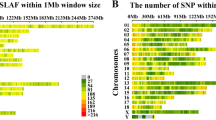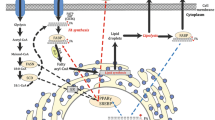Abstract
Background
Recently, many researchers focus on the best way to produce high-quality meat, as the trend in food consumption today is to focus on quality. In general, consumers’ preferences in beef differ depending on taste and meatiness. Therefore, researchers are interested in how the marbling score affects the flavors of meat or the various factors that make up the meatiness to captivate the consumers’ tastes.
Objective
This study identifies single nucleotide polymorphisms (SNPs) or gene combinations that affect the carcass traits of Korean cattle (Hanwoo) by using the multifactor dimensionality reduction (MDR) method.
Methods
We collected the candidate SNPs to identify SNPs related to marbling scores from whole-exome sequencing and bovine SNP genotyping data. Using 96 Hanwoo samples, we performed PCR amplification to investigate the polymorphism status. In addition, we investigated genetic relationships between carcass traits and SNPs using 612 Hanwoo samples. Furthermore, each candidate SNP genotype and the combinations of SNP genotypes were verified to improve the accuracy of genetic relationships using MDR method.
Results
Twenty-four candidate SNPs associated with carcass trait and marbling scores were identified from SNP genotyping and whole-exome sequencing. Among them, three SNP markers (c.459 T > C of the PLCB1 gene, c.271 A > C of the C/EBPα gene, and g.17257 A > G of the TDRKH gene) were showed statistically significant differences between intramuscular fat and genotypes. Especially, two candidate SNPs, including c.459 T > C located in the PLCB1 gene and c.271 A > C located in the C/EBPα gene, could be highly associated with the intramuscular fat of Hanwoo quality grade. In addition, the combination of SNP genotypes is showed higher significant differences with carcass weight, backfat thickness, and longissimus dorsi muscle area.
Conclusion
Three SNP genotypes and the combination of SNP genotypes in the PLCB1, C/EBPα, and TDRKH genes may be useful genetic markers for improving beef quality.
Similar content being viewed by others
References
Bastone L, Reilly M, Rader DJ, Foulkes AS (2004) MDR and PRP: a comparison of methods for high-order genotype-phenotype associations. Hum Hered 58:82–92
Chung KY, Lee SH, Cho SH, Kwon EG, Lee JH (2018) Current situation and future prospects for beef production in South Korea—a review. Asian-Australas J Anim Sci 31:951–960
Henderson CR (1976) A simple method for computing the inverse of a numerator relationship matrix used in prediction of breeding values. Biometrics 32:69–83
Jo C, Cho SH, Chang J, Nam KC (2012) Keys to production and processing of Hanwoo beef: a perspective of tradition and science. Anim Front 2:32–38
Kim DG, Shim JY, Cho BK, Wakholi C, Seo Y, Cho S, Lee WH (2020) Discrimination study between carcass yield and meat quality by gender in Korean native cattle (Hanwoo). Asian Australas J Anim Sci 33:1202–1208
Lee JY, Kwon JC, Kim JJ (2008) Multifactor dimensionality reduction (MDR) analysis to detect single nucleotide Polymorphisms associated with a carcass trait in a Hanwoo population. Asian Australas J Anim Sci 21:784–788
Lee JY, Oh DY, Kim HJ, Jang GS, Lee SU (2017) Detection of superior genotype of fatty acid synthase in Korean native cattle by an environment-adjusted statistical model. Asian-Australas J Anim Sci 30:765–772
Mokry FB, Higa RH, de Alvarenga MM, Oliveira de Lima A, Meirelles SL, Barbosa da Silva MV, Cardoso FF, Morgado de Oliveira M, Urbinati I, Meo Niciura SC et al (2013) Genome-wide association study for backfat thickness in Canchim beef cattle using Random Forest approach. BMC Genet 14:47
Ortega MS, Denicol AC, Cole JB, Null DJ, Taylor JF, Schnabel RD, Hansen PJ (2017) Association of single nucleotide polymorphisms in candidate genes previously related to genetic variation in fertility with phenotypic measurements of reproductive function in Holstein cows. J Dairy Sci 100:3725–3734
Piantoni P, Daniels KM, Everts RE, Rodriguez-Zas SL, Lewin HA, Hurley WL, Akers RM, Loor JJ (2012) Level of nutrient intake affects mammary gland gene expression profiles in preweaned Holstein heifers. J Dairy Sci 95:2550–2561
Ritchie MD, Hahn LW, Roodi N, Bailey LR, Dupont WD, Parl FF, Moore JH (2001) Multifactor-dimensionality reduction reveals high-order interactions among estrogen-metabolism genes in sporadic breast cancer. Am J Hum Genet 69:138–147
Shin SC, Kang MJ, Chung ER (2007) Identification of a novel SNP associated with meat quality in C/EBP alpha gene of Korean cattle. Asian Australas J Anim Sci 20:466–470
Shin S, Hong C, Song S, Ahn K, Chung E (2016) Single nucleotide polymorphisms in exomes of high- and low-marbled meats in Korean cattle. Anim Genet 47:756–757
Vreeland WN, Meagher RJ, Barron AE (2002) Multiplexed, high-throughput genotyping by single-base extension and end-labeled free-solution electrophoresis. Anal Chem 74:4328–4333
Wang H, Zan LS, Wang HB, Song FB (2011) A novel SNP of the C/EBP alpha gene associated with superior meat quality in indigenous Chinese cattle. Genet Mol Res 10:2069–2077
National Livestock Cooperatives Federation (NLCF) (1998) Korean carcass grading standard. Seoul, Korea: National Livestock Cooperatives FederationKorean carcass grading standard. Seoul, Korea: National Livestock Cooperatives Federation
Acknowledgements
This research was supported by Basic Science Research Capacity Enhancement Project through Korea Basic Science Institute (National research Facilities and Equipment Center) grant funded by the Ministry of Education (Grant No. 2019R1A6C1010033). The present research was supported by the research fund of Dankook University in 2019 for the University Innovation Support Program. This work was carried out with the support of “Cooperative Research Program for Agriculture Science & Technology Development (Project No. PJ015996012021)” Rural Development Administration, Republic of Korea.
Author information
Authors and Affiliations
Corresponding authors
Ethics declarations
Conflict of interest
The authors declare that there is no conflict of interest regarding the publication of this paper.
Additional information
Publisher's Note
Springer Nature remains neutral with regard to jurisdictional claims in published maps and institutional affiliations.
Rights and permissions
About this article
Cite this article
Kim, S., Lee, YM., Kim, D.H. et al. Investigation of high correlation with carcass traits of SNPs of the PLCB1, C/EBPα, and TDRKH genes and the combinations of SNPs using the MDR method in the Hanwoo. Genes Genom 43, 961–973 (2021). https://doi.org/10.1007/s13258-021-01122-y
Received:
Accepted:
Published:
Issue Date:
DOI: https://doi.org/10.1007/s13258-021-01122-y




